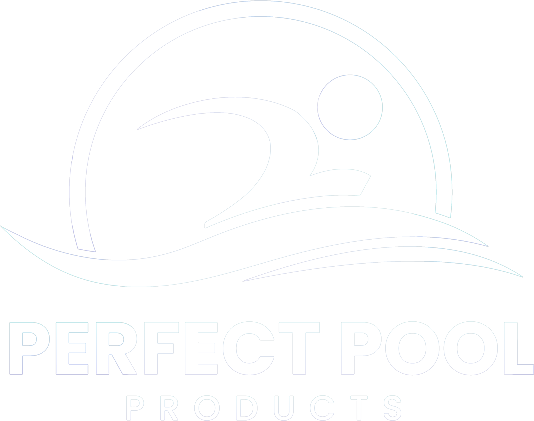Welcome back, pool owners! Ever find your pool water looking cloudy or not as clean as you’d like? Maybe you’re noticing strange noises from your pool filter or even leaks.
These are common problems that many pool owners face. And they can make maintaining your pool feel like a big headache. But don’t worry – the solution is easier than you think!
Your pool filter works hard to keep your water sparkling clean, but it needs the right parts to do its job. Without the right filter parts, your pool water can get dirty, your filter can break down, and you might spend more time fixing it than enjoying a swim. That’s why it’s so important to know about the key pool filter parts every pool owner should have.
Today, I am gonna tell you about the top 10 must-have pool filter parts that will help keep your pool in perfect shape. Plus, I will give you tips on where to buy high-quality parts for your pool, so you don’t waste time or money.

Why Pool Filter Parts Matter
Pool filter parts work together to keep your water clean, clear, and safe for swimming. Without it, your pool filter wouldn’t be able to remove dirt, debris, or harmful particles from the water. Over time, this could lead to cloudy water, algae growth, or even damage to your pool equipment.
Each part of the filter has a specific job. Some help trap tiny particles, while others ensure smooth water flow. When one part isn’t working properly, the entire system can struggle. Sot it makes your pool harder to maintain and more expensive to fix.
That’s why timely replacements are so important. Pool filter parts, like O-rings, cartridges, or backwash valves, can wear out from regular use. Replacing them when needed ensures your filter runs efficiently and keeps your pool looking its best.
Top 10 Must-Have Pool Filter Parts
Keeping your pool in great shape requires the right tools, and filter parts are at the heart of the system. Here are the top 10 must-have pool filter parts every pool owner should know about.
1. Cartridge
Cartridge filters are the workhorses of your pool filtration system. They trap dirt, debris, and even tiny particles that make your pool water cloudy. By using these filters, you can ensure your pool stays clean and safe for swimming. These filters are easy to maintain—simply rinse them with a hose to remove debris and replace them every 1–2 years for the best results. Regular care will keep your water crystal clear and your system running efficiently.

2. O-Rings
O-Rings may be small, but they play a crucial role in your filter system. They create a tight seal that prevents leaks and maintains proper water pressure. If the O-Rings become worn or cracked, it can disrupt your pool's filtration. To keep them in good condition, inspect them regularly and apply a silicone lubricant to prolong their life. Replacing them when needed is a simple and cost-effective way to avoid bigger problems.
3. Backwash Valves
Backwash valves are essential for cleaning sand and DE filters. They work by reversing the water flow, which flushes out accumulated debris and restores the filter's efficiency. Without a properly functioning backwash valve, your filter could become clogged and less effective. To maintain these valves, operate them gently and inspect for leaks or signs of wear. If needed, replace them promptly to ensure your filter runs smoothly.
4. Pressure Gauges
Pressure gauges are like the eyes of your filter system. They let you monitor the pressure inside, so you know when it’s time to clean or backwash your filter. A filter that runs with the wrong pressure can waste energy and wear out faster. To get accurate readings, replace damaged or faulty gauges immediately. Having a reliable pressure gauge can save you from bigger issues down the line.

5. Filter Cartridges
Filter cartridges are the heart of any cartridge filtration system. They are responsible for catching debris and ensuring that your pool water remains clean and clear. Over time, these cartridges become clogged and lose their efficiency. Cleaning them with water weekly can extend their life, but replacement is key to maintaining excellent water quality. Don't wait until your pool water becomes murky—replace your filter cartridges regularly.
6. Drain Plugs
Drain plugs might seem insignificant, but they are critical during pool maintenance. They allow you to easily remove water from the filter system when performing repairs or winterizing your pool. A well-functioning drain plug prevents messes and saves time during maintenance. Check for cracks or wear and always tighten them securely after use to avoid leaks.
7. Valve and Gauge Assemblies
Valve and gauge assemblies combine essential components like flow valves and pressure gauges into one unit. These assemblies help you control water flow and monitor your system’s performance with ease. Properly functioning assemblies make it simpler to keep your pool filter working efficiently. Regularly check connections and replace faulty parts to avoid interruptions in your filtration.

8. Multiport Valves
Multiport valves are versatile tools that let you control various functions of your filter system, such as filtering, backwashing, and draining. With a single lever, you can manage all these operations, saving time and effort. To keep your multiport valve in good shape, clean it regularly and avoid using excessive force when operating the handle.
9. Diverter Seals
Diverter seals help control the flow of water inside your filter system. By preventing leaks and maintaining consistent water circulation, these seals ensure your pool stays clean and well-filtered. Over time, they may wear out, leading to reduced efficiency. Replacing them promptly when signs of wear appear will keep your filter running smoothly.
10. Replacement Tanks
Replacement tanks are essential when the main body of your filter system becomes worn or damaged. A sturdy, well-maintained tank ensures that all internal components work together effectively. Inspect your tank periodically for cracks or leaks, and replace it if you notice any issues. A new tank can significantly improve the efficiency and lifespan of your filtration system.
With these essential filter parts, you not only maintain a clean pool but also save money by keeping your filtration system in top condition.
You can simply visit our website to explore these products and find the perfect fit for your pool!
How to Know When to Replace These Parts
Pool filter parts don’t last forever. Over time, wear and tear can reduce their efficiency, affecting your pool’s cleanliness and your system’s performance. Here’s how you can tell when it’s time to replace these essential parts and some tips to make them last longer.
Signs It’s Time to Replace Pool Filter Parts:
-
Leaks: If you notice water dripping from areas around O-Rings, drain plugs, or valves, it’s a clear sign that the part has worn out or cracked. Even small leaks can cause bigger issues if left unchecked.
-
Reduced Water Clarity: When your pool water starts to look murky or cloudy despite regular cleaning, it’s often a sign that your cartridge filters or filter cartridges are clogged or failing.
-
Pressure Changes: If your pressure gauge shows unusually high or low readings, it could indicate a problem. High pressure often means the filter is clogged, while low pressure could point to leaks or damaged components like diverter seals or O-Rings.
-
Visible Damage: Cracks, corrosion, or other physical damage to parts like replacement tanks or backwash valves are clear indicators that it’s time for a swap.
-
Frequent Backwashing or Cleaning Needs: If you find yourself backwashing or cleaning your filters more often than usual, it’s likely that the filters are nearing the end of their lifespan.
Tips to Extend the Lifespan of Your Pool Filter Parts
-
Regular Cleaning: Clean your cartridge filters and filter cartridges regularly to prevent buildup. Rinsing them with a hose every week can make a big difference.
-
Proper Lubrication: Apply silicone lubricant to O-Rings and other rubber parts to keep them flexible and prevent cracking.
-
Gentle Handling: Avoid using excessive force when operating valves or opening filter tanks. Being gentle reduces wear and tear.
-
Seasonal Maintenance: Before closing your pool for the season, inspect all parts for wear. Replace anything that looks damaged to avoid surprises when you reopen.
-
Monitor Pressure Gauges: Keep an eye on your pressure gauge readings. If they’re outside the normal range, inspect your filter system for clogs or leaks right away.

When in Doubt, Replace It
It’s better to replace a worn part early than to risk further damage to your pool system.
Regular maintenance and timely replacements will save you money and ensure your pool stays clean and enjoyable year-round.
 Trusted By Pool Owners Nationwide
Trusted By Pool Owners Nationwide


